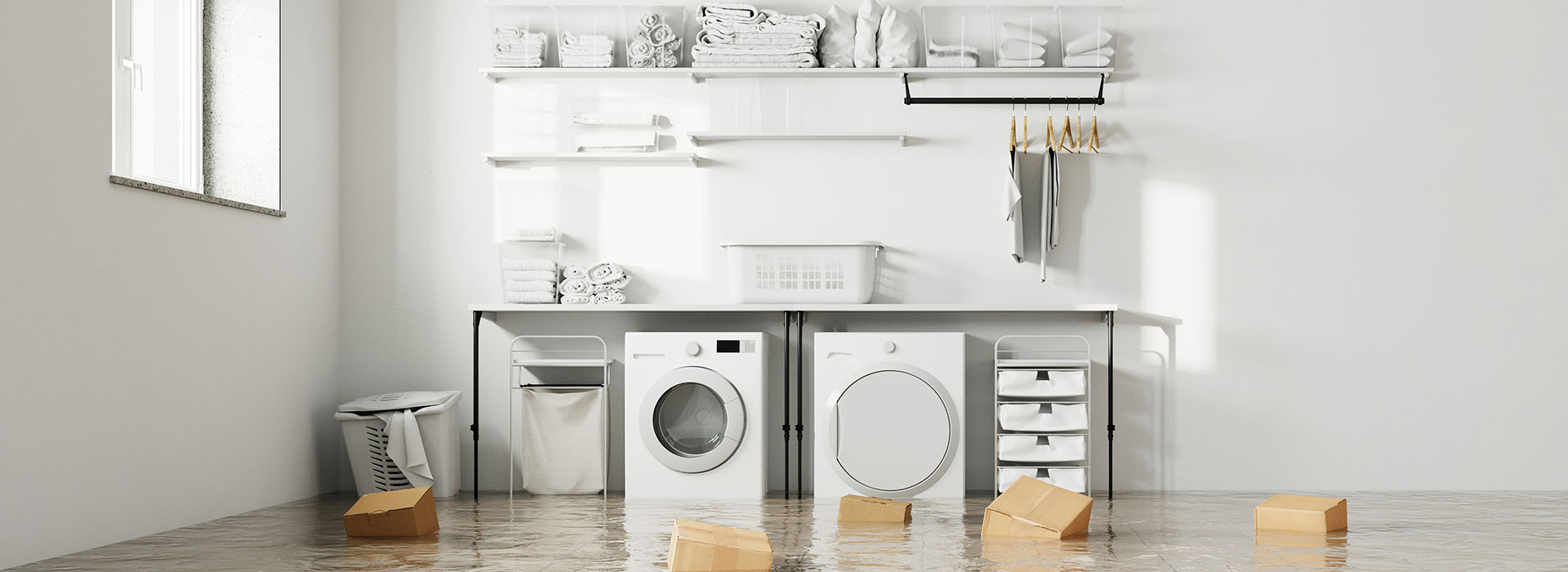Hints and tips to help prevent a wet basement - or worse.
April showers might bring May flowers, but these days it seems that many of the showers have morphed into torrential downpours and widespread spring flood warnings have become the norm instead of the exception.
Every home is at risk of having its basement flooded even if it’s never happened before and it’s more likely to occur during heavy rains or when snow and ice melt and there’s nowhere for the resulting water to go.
Start with the outside of your home.
Clear out your eavestroughs and downspouts
Remove leaves and debris that prevent proper drainage. When eavestroughs are blocked, they overflow, spilling water in a cascading sheet next to your foundation walls, making it much easier for water to enter your basement.
Check roadside grates
Make sure that any roadside grates beside your property are clear of debris to ensure that rainwater and snowmelt flow into storm sewers instead of pooling and flooding.
Inspect your downspouts
Check to make sure that your downspouts are draining properly and moving water ideally 2 meters away from your foundation. If you notice that the ground next to your foundation has settled, fill it with a solid, clay-based soil that can be compacted and sloped away from your foundation.
Seal window wells
If your home has window wells, make sure they are properly sealed. At the same time, check to make sure that window frames are in good shape and seal up any gaps.
Check the slope around your home
It should be graded away from your foundation on all sides including under stairs and decks. The soil directly beside your foundation wall should be 10 to 15 cm higher than the soil 1.5 metres away from your foundation.
Increase the green space around your home
Add native plants and shrubs that have evolved to thrive in your region and install porous surfaces such as gravel to help absorb rainwater and melted snow.
Help water flow away from your home
Ensure that any drainage swales or shallow ditches between your property and your neighbour’s property are clear of obstructions to allow water to be carried away.
Next, there are steps that you can take inside your home.
Never pour fats and oils down your drain
Water can enter your basement in several different ways and one of the nastiest is a sewer backup. For this reason, resist the temptation to pour bacon fat or other liquid oils down your drains. Liquid fats can coagulate and mix with other particles like hair and food waste to form an impenetrable mat that can block your drainage system anywhere, not just below your sink. Soon your entire system can backup and you can find sewage bubbling up through the nearest open drain. Instead, dispose of small amounts of oil in your green bin. Of course, this also means that you shouldn’t flush dental floss, “flushable” wipes, or other personal care products down your toilet. Instead dispose of them in the appropriate bin.
Seal up cracks
Seal cracks in your foundation walls and basement floors. Sealing cracks from the inside is generally effective if done properly. Most of the time, you shouldn’t have to dig anywhere beside your foundation to seal a crack.
Install a sump pump
Have a sump pump installed in your basement and routinely check it to make sure that it doesn’t get blocked. Since sump pumps operate on electricity, they should also be connected to a back-up battery in case of a power failure.
Do you need a backwater valve?
Look into having a backwater valve connected to your main sewage line. This device allows sewage to flow in one direction only – out of your house. When sewage begins to move towards your house, the valve closes. Check with your municipality to see if it offers subsidies to offset the cost of installation. Some insurance companies may offer a reduction in your premiums if you have a backwater valve.
Other steps you can take.
Homes built before the 1940s or 1950s are not likely to have a foundation drain or weeping tile that runs around the perimeter of their foundation’s base. Weeping tile is a perforated pipe designed to move water away from your foundation. If you have severe problems with water entering your basement, consider calling in a professional to see about having weeping tile installed.

Don't assume you have coverage if your home is flooded.
Talk to your insurance broker to find out about what kind of water damage is covered under your policy and what is available to you. Most people assume that their insurance policy will protect them from damage as a result of water entering their home from outside. In fact, basic coverage generally only offers protection from unforeseen events inside your home such as a burst water pipe or an overflowing bathtub.
Read more about additional home insurance options such as Overland Water, Ground Water or Sewer Backup coverage. And then, contact us today to find out more.
Further Reading
Find out more about what you can do to protect your home. Download the Protect your Home from Basement Flooding Booklet from the Institute for Catastrophic Loss Reduction.




